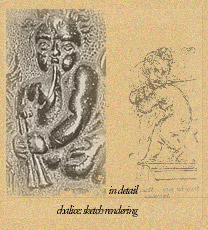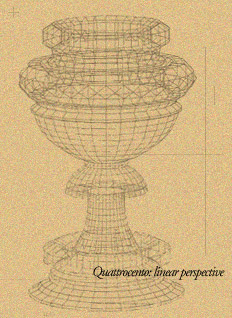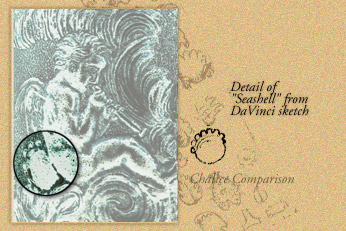 |
||||||||||||
 |
 |
|||||||||||
|
INTRODUCTION "Throughout Leonardo Da Vinci's artistic career, these ageless putties, little angels and symbolic troubadours were used to announce and play their eternal song and remind listeners of the heavenly flow of nature. Many authors such as Dan Brown would say that they herald the sweet sounds of the World as "sacred and feminine." Leonardo's message was universal and classical, and it is repeated on the chalice. For Da Vinci, the study of nature was key to understanding the universe, but it appears that it was always with a reverence to the spiritual. For him, nature represented a perfect view of the cosmic balancing act that life plays out every day." The Da Vinci Chalice sings to all, and those who slow down will hear its song, as though listening to earth music from a seashell for the first time. Da Vinci was a naturalist, a humanist, an inventor, a scholar, an artist and the ultimate Renaissance man. He strove to find understanding in the smallest parts of life and in the largest questions of humanity that surrounds everyone." To date, the Da Vinci Chalice Group has located three important new direct links between da Vinci's drawings and work on the chalice. The Group is trying to uncover additional drawings that will aid in the task. THE LEFT-HANDED MASTER'S WORK The applications and design was done by a left-handed artist, and da Vinci was left-handed.
It is documented that da Vinci loved to hide elements and symbols in his works - hidden treasures for future discovery. It is one of the ways investigators evaluate if a work is truly by him. The Da Vinci Chalice Group continues to work on this and any other leads that are uncovered. |
||||||||||||
 |
||||||||||||
 |
||||||||||||
 |
||||||||||||
|
Putto. The putto (pl. putti) is a figure of a pudgy human baby, almost always male, often naked and having wings, found especially in Italian Renaissance art. The figure derives from Ancient art but was "rediscovered" in the early Quattrocento. These images are frequently, and erroneously, confused with cherubs. |
||||||||||||